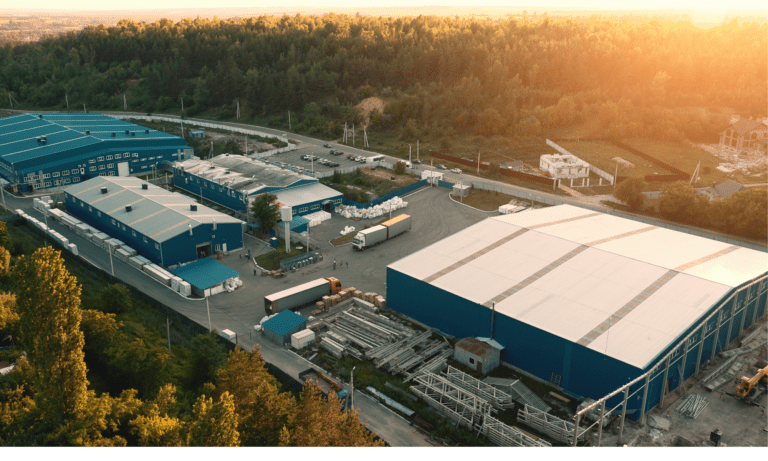Commercial Motor Vehicles (CMV) and DOT Inspection Requirements
When the fleet has CMVs weighing in at more than 10,000 pounds fleet managers can anticipate that drivers will be stopped for a DOT inspection sooner or later. All CMVs registered at 10,001 pounds or more must undergo annual DOT inspections conducted by a DOT official or state trooper to ensure that all CMV parts and accessories are in good condition, functioning properly, and are safe for over-the-road operations. Understanding the 6 levels of DOT inspections in detail can help you prepare drivers, vehicles, and the required documentation they’ll need to keep the fleet rolling through even the most intense inspection levels.
Below we’ll take a detailed look at the 6 primary levels of DOT inspections.
Level 1- North American Standard Inspection (NAS)
The Level 1 NAS inspection is the most thorough DOT inspection including a comprehensive check of the driver, vehicle, and an intensive review of required documentation for both. Driver documents to be provided include:
-
Driver’s license
-
Medical certificate & waiver
-
Daily logs
-
Hours-of-service documentation
-
Driver and vehicle inspection reports (DVIRs)
-
Hazmat endorsements
The DOT inspector will also verify that the driver isn’t under the influence of alcohol, drugs, or any other toxic substance while on the job. Cargo must be properly loaded and secured. The CMV itself will undergo a thorough checkup to ensure proper and efficient operation of the following vehicle components:
-
Exhaust system
-
Tires
-
Rims
-
Brakes
-
Hubcaps
-
Suspension
-
Coupling devices
-
Emergency exits
-
Trailer bodies
-
Windshield wipers
-
Frame
-
Tail lights and headlamps
-
Turn signals
-
Steering wheel
-
Seat belt
-
Fuel systems
Level 2- Walk-Around Driver and Vehicle Inspection
The Level 2 inspection includes almost the same criteria of the Level 1 NAS inspection with the exception that the inspector only checks the items which can be inspected without the need to physically get under the vehicle.
Level 3- Driver Only Inspection
Driver credentials and documentation undergo in-depth scrutiny in the Level 3 Driver Only Inspection process. The logbook for the last 8 days over the road must be available, as well as any applicable overloaded permits. The driver will be checked for alcohol or drug use and proper use of the seatbelt. Documentation will be inspected with a detailed examination of the following items:
-
Driver and Vehicle Inspection Report (DVIR)
-
Driver’s license
-
Endorsements
-
Hazmat requirements
-
HOS documentation
-
Medical card and waiver certifying that the driver has passed his annual DOT physical exam
-
Driver’s RODs (records of duty)
-
Driver incident history
Level 4- Special Inspection
The Special Inspection may be initiated by the DOT with its state partners to rule out known faults or suspected unsafe trends discovered by DOT research. The Level 4 inspection usually focuses on a single piece of equipment such as the valves on a tanker trailer, or other common flagged mechanical equipment failures which may be installed on your fleet’s CMVs. These special checks are designed as part of a data study to support or refute data which has already been gathered.
Level 5- Vehicle Only Inspection
A Level 5 inspection is conducted without the driver being present. Frequently these inspections will occur following an accident or incident where the driver is no longer at the scene. The inspector will use the same inspection criteria as the Level 1 NAS inspection including getting under the vehicle. The vehicle only inspection will focus on:
-
Loose or temporary seating on buses
-
Van and open-top trailer bodies
-
Brakes
-
Fuel systems
-
Proper securing of cargo
-
Coupling devices
-
Exhaust systems
-
Steering mechanism
-
Signal and lighting devices
-
Suspensions
-
Tires and wheel assemblies
-
Electrical cables and systems in the engine and battery compartments
Level 6- Enhanced NAS Inspection For Radioactive Shipments
The Level 6 inspection applies only to the highly specialized radioactive hauling sector of the trucking industry. The formal title of this inspection is “NAS (North American Standard) Inspection for Transuranic Waste and HRCQ (Highway Route Controlled Quantities) of Radioactive Material.” Fleets including medical waste truck drivers, hazardous material haulers, and nuclear plant truck drivers need to undergo this rigorous degree of inspection. Drivers, vehicles, and cargo must all be free of defects before departure for deliveries. The Level 6 enhancements to the Level 1 NAS inspection normally require about 60 minutes to complete and include:
-
Special inspection for radiological requirements
-
Inspection for specific radiological shipments
-
Enhanced out of service criteria
Once the Level 6 criteria have been met a special nuclear symbol decal is issued for the CMV. It is attached to the vehicle at the point of origin and removed once the delivery has arrived at its destination. The nuclear symbol decal is only valid for a single trip.
Where and When Can CMV Inspections Occur?
Periodic CMV inspections are required annually by the US DOT. Most states have the same annual requirement so there is reciprocity between the two governing authorities. That is to say that compliance with the state-mandated DOT inspection also fulfills the US DOT federal requirement. But the annual DOT inspection is not the only inspection fleet managers and drivers need to prepare for. Roadside inspections can occur at any time, and the way in which they are handled will vary depending on the state DOT. Some perform inspections at designated weigh stations, others at the state line borders, and many states have roving DOT agents on patrol with the authority to pull over any CMV.
Avoiding Unnecessary Roadside Inspections
Spot inspections can occur at any time for any reason but roadside inspections for cause are more common. Speeding is the most common violation and can be an invitation for further scrutiny. Poor driver behavior can give law enforcement a reason to make a stop and initiate a roadside inspection including stops for :
-
Tailgating
-
Not wearing the seat belt,
-
Failure to obey traffic control devices
-
Talking or texting while driving
-
The suspicion that alcohol or drugs have caused impaired driving
-
Aggressive driving
Obvious problems with the vehicle itself can trigger a spot inspection as well, or a “roadside inspection for cause”. These include observable faults on the CMV such as low tire pressure, loose air hoses, and headlights or tail lights not working. Even unsightly or excessive dirt and dents on the vehicle can give law enforcement a reason for closer inspection to ensure safety. Leaks, spills, unusual odors, poorly secured cargo or other unsafe conditions are sure to attract further inspections.
Conclusion
At Whip Around our user-friendly electronic inspection solutions can ensure that pre and post trip inspections are carried out reliably. Our digital DVIR app makes it easy for drivers to complete DVIRs which keep the CMVs in your fleet safe, compliant, and ready for inspection at any time with the versatility and convenience of their smartphones, so don’t hesitate to contact us.






